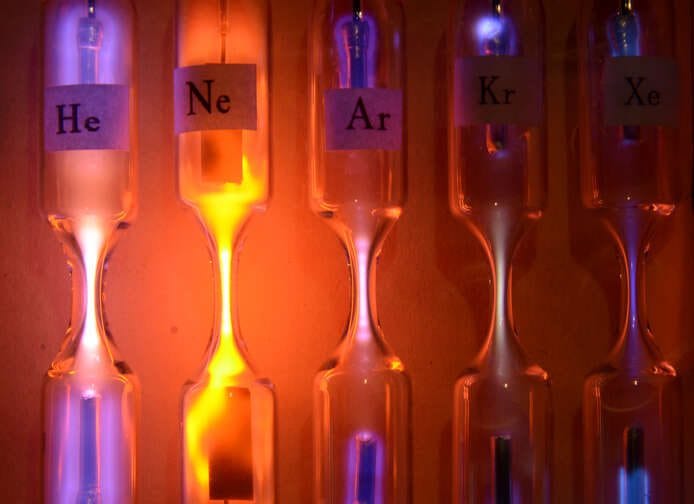
Introduction to the Neon Signage Industry
The Neon Signage Industry has been a vibrant and colorful part of our urban landscapes for over a century. From the bustling streets of Tokyo to the iconic Las Vegas Strip, these radiant displays have captivated audiences with their mesmerizing light and vivid colors. But behind the dazzling spectacle lies a less glamorous truth. Traditional gas neon signs, the lifeblood of this industry, have a significant environmental impact. But change is on the horizon, and it’s taking the form of eco-friendly LED neon signs.
The neon signage industry has been a cornerstone of advertising for businesses worldwide, offering a unique and eye-catching method of attracting potential customers. The glow of a neon sign can create a warm and inviting ambience, or it can shout loudly to passersby, making a clear and unmistakable statement. Neon signs have been a popular choice for businesses and advertisers due to their versatility, visibility, and longevity.
However, as we become more aware of our environmental responsibilities, it has become clear that the traditional methods of producing and operating neon signage are not sustainable. The industry is ripe for a revolution, and it’s coming in the form of LED neon signs.
Traditional Gas Neon Signs and Their Impact
Gas neon signs have been the industry standard for decades. Their bright, distinctive glow is created by passing an electric current through rarefied neon gas contained within a glass tube. While the result is undoubtedly eye-catching, the process of creating and maintaining these signs comes with a hefty environmental price tag.
The production of gas neon signs involves the use of hazardous materials, including mercury, a toxic heavy metal. Exposure to mercury can lead to severe health problems in humans, and when it finds its way into the environment, it can contaminate water sources and harm wildlife. Furthermore, the neon gas itself is a potent greenhouse gas, with a global warming potential many times that of carbon dioxide.
In addition to the environmental hazards associated with their production, gas neon signs also consume a significant amount of energy. They require a high voltage to operate, which translates into high energy consumption. This not only leads to higher electricity bills for businesses, but it also contributes to our global carbon footprint.
Why Gas Neon Signs Are Being Phased Out
Given the environmental and health risks associated with gas neon signs, it’s no surprise that they are being phased out. Businesses, governments, and consumers are becoming more conscious of their environmental impact and are seeking out greener alternatives.
Regulatory restrictions on the use of hazardous materials in manufacturing, coupled with increased energy efficiency standards, have made it increasingly difficult for traditional gas neon signs to compete. In many jurisdictions, the use of mercury in neon signs is now heavily regulated or outright banned, leading to a decline in their production and use.
Furthermore, the maintenance and repair of gas neon signs can be costly and hazardous. Broken signs can leak toxic gases and heavy metals into the environment, posing a threat to public health and safety. The need for skilled technicians to repair these signs further adds to their operational costs.
LED Neon Signs: The Green Revolution
Enter the LED neon signs, the green revolution in the neon signage industry. These signs use light-emitting diodes (LEDs) instead of neon gas to produce light. LEDs are highly efficient, consuming far less energy than their gas counterparts. This not only reduces their operational costs but also makes them a more environmentally friendly option.
LED neon signs do not contain any hazardous materials, making them safer to produce, install, and maintain. They are also more durable and longer-lasting than gas neon signs, reducing the need for replacement and waste.
Furthermore, LED neon signs offer a broader range of colors and design possibilities. They can be programmed to change color, flash, or animate, offering a level of versatility that traditional gas neon signs simply cannot match.
How LED Neon Signs are Eco-friendly
LED neon signs are a green solution in the neon signage industry. They are eco-friendly in several ways. Firstly, they consume less power. An LED sign can operate on as little as 10% of the power required by a traditional gas neon sign, making them a far more energy-efficient option.
Second, LED neon signs do not contain any hazardous materials. Unlike their gas counterparts, they are mercury-free and do not emit harmful greenhouse gases. This makes them safer for both humans and the environment.
Finally, LED neon signs are more durable and long-lasting. They can last up to 50,000 hours, compared to around 10,000 hours for a gas neon sign. This means less waste in the form of broken or worn-out signs and less resource consumption for manufacturing replacements.
High Quality of LED Neon Signs
While LED neon signs offer clear environmental benefits, they do not compromise on quality. In fact, they often outshine their gas counterparts in terms of brightness, color range, and durability.
LED neon signs offer a brighter and more uniform light output. They can be seen clearly from a distance and are not affected by outside light conditions. This makes them an excellent choice for both indoor and outdoor signage.
Moreover, LED neon signs offer a wider range of colors. They can produce any color in the RGB spectrum, allowing for more creative and eye-catching designs.
Finally, LED neon signs are more durable. They are resistant to weather and impact damage, and their long lifespan means they require less maintenance and replacement.
Voodoo Neon: Revolutionizing the Neon Industry
One company at the forefront of this green revolution is Voodoo Neon. They have been revolutionizing the neon industry with their high-quality and eco-friendly LED neon signs for business.
Voodoo Neon is committed to sustainability and environmental responsibility. They use premium LED neon flex, which is more energy-efficient, durable, and safer than traditional neon gas. Their signs are handcrafted with care and precision, ensuring a high-quality product that lasts.
Voodoo Neon also offers custom design services, allowing businesses to create unique and creative signs that reflect their brand and message. With their commitment to quality, environmental responsibility, and customer satisfaction, Voodoo Neon is leading the way in the green revolution of the neon signage industry.
LED Neon Signs as the Green Solution
In the face of growing environmental concerns, LED neon signs offer a green solution to the neon signage industry. They are energy-efficient, free from hazardous materials, and durable, making them an eco-friendly alternative to traditional gas neon signs.
In addition to their environmental benefits, LED neon signs also offer practical advantages. They are cost-effective, with lower operational costs and longer lifespans. They also offer greater design flexibility, with a wide range of colors and programmable effects.
By choosing LED neon signs, businesses can reduce their environmental impact while still enjoying the benefits of high-quality, eye-catching signage.
Benefits of Switching to Environmentally Friendly LED Neon Signs
Making the switch to environmentally friendly LED neon signs offers a range of benefits. For businesses, the lower energy consumption results in lower operational costs. The longer lifespan and durability of LED neon signs also reduce maintenance and replacement costs.
For the environment, the benefits are clear. LED neon signs reduce energy consumption and greenhouse gas emissions. They are also free from hazardous materials, reducing their environmental impact and making them a safer choice.
Moreover, by choosing LED neon signs, businesses show their commitment to sustainability. This can enhance their brand image and appeal to environmentally conscious customers.
Conclusion: Future of the Neon Industry
The future of the neon signage industry looks bright, and it’s green. As awareness of environmental issues continues to grow, the demand for eco-friendly alternatives in every sector is on the rise. The neon signage industry is no exception.
LED neon signs are leading the way in this green revolution. With their energy efficiency, environmental safety, and high quality, they are set to outshine traditional gas neon signs and become the new industry standard.
The path to a greener future is illuminated by LED neon signs. Businesses that make the switch today will not only benefit from lower costs and high-quality signage, but they will also be making a positive contribution to the environment. It’s a win-win situation for businesses, consumers, and the planet.
Join the green revolution today and make the switch to LED neon signs. Together, we can light up the world in a more sustainable, environmentally friendly way.


